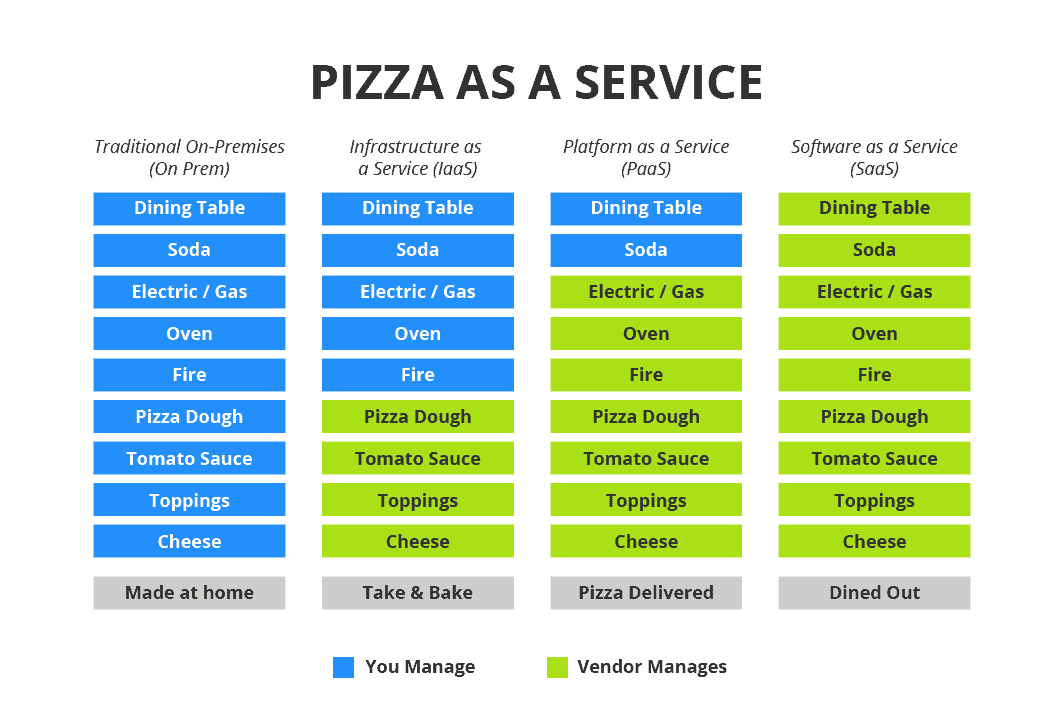What is Cloud Data Integration?
For many years, all your services, products, or just the way you worked within your organization that required technology was in data centers that you owned and managed. Over time, the storage devices and servers filled these centers, as virtualization became prevalent in 2000 via VMWare. IT realized they could build basic models of servers and storage as code anyone could use. Operations and developers could create code to assemble applications and the associated infrastructure as code (IaaS and PaaS). The availability of cost-effective and secure cloud services has facilitated the delivery of software code-based services, making it easier for businesses to rapidly change how they work to address customer demand or solve internal staff productivity issues.

Consider the impact on data! What you managed is potentially now on cloud infrastructure and several other places owned and operated by others. Cloud complicates data storage as it can be moved across the globe to better service your demand in the blink of an eye.
Cloud integration is the creation, management, governance, and maintenance of your technology across many locations, regardless of whether they are yours. Cloud integration underpins your ability to benefit from a hybrid mix of technology for all aspects of your business. Sales and marketing can be on a platform that is entirely different from finance, for example. The goal is to make the movement and control of data and these services as cohesive as possible.
Benefits of Cloud Integration
Why would we want to add a hybrid cloud solution to our technology requirements?
One of the reasons may be because very few firms have the technical skills and financial health to build and manage their data services. SaaS and cloud vendors can adopt and adapt the latest technology securely to ensure you can attract and retain customers while simplifying the way you work.
Remember that cloud integration combines the computing power you need plus the transfer of data to any application or customer when requested. You don’t want to be front-page news because your service is slow or unsafe. You also don’t want to have information not to be quickly available to decision-makers or to be out-of-date just when you have to make a critical decision.
The COVID-19 pandemic made the world move to the cloud faster than anyone had anticipated. This movement has accelerated the alteration of your ways of work, applications you rely upon, and the vendors that were your partners.Moving to a hybrid data integration cloud model has provided:
- Increase in operational effectiveness and efficiency from elasticity, the ability to scale infrastructure, specifically compute, as business needs change
- Improved flexibility and agility to meet customer requests with faster time to market
- Improved service incident management, business continuity
- Facilitates the concepts of enterprise service and data management, DevOps, and Agile across your organization
- Increased staff and customer satisfaction
- Creating a single source of truth in your data
- Reduced cost of technology (computing power, data storage primarily)
- Reduction of redundant or replicated data
- Advancing regulatory compliance and governance
- Automation of workflows by eliminating manual data entry across teams
- Opex vs Capex savings
Challenges of Cloud Integration
Creating a process to access data and ensure that your applications do not fail requires a mix of storage and computing power readily available in the cloud. But this flexibility comes with challenges such as:
- Designing data flow across multiple applications with no errors in translation
- Scaling data and computing capacity (up and down)
- Ensuring that data in warehouses or lakes are secure and accessible by approved individuals or services
- Minimizing custom data formats as these might impact your agility in the future
- Allowing non-technical staff access to leverage templates (data) that help them perform their daily tasks
- Ability to prove to customers, staff, and regulators that information is governed
Types of Cloud Integration
Transitioning to a hybrid environment of cloud, SaaS, and your in-house services requires assistance from partners who understand the technical aspects and how to create a new organizational model. Remember, though, that they will sell their solutions, so even in your design, you might want a mix of partners to provide the best competitive model for your digital future.
Consider some of these questions when you design your integrated cloud future:
- How much do you want to manage, or how willing are you to continually develop your staff to maintain technical excellence?
- You might want to consider a Managed Service Provider (MSP)
- How will you verify that your data integration to the cloud is always synced between environments? (when processes, transported and imported)?
- Are your applications capable of issuing automated transfer and acceptance triggers for data movement and interoperability?
- Do you want to build your data transfer mechanism or rely on the skills of the cloud or SaaS provider?
- Can your technology become Infrastructure as Code (IaC) or, even better, offered as a Platform as a Service?
- What monitoring and alerting tools and processes do you require?
- Are the real-time dashboards to view data in a variety of formats easy to read and modify?
- Is the solution scalable, reusable, flexible, compliant, and cost-effective?
- How is your data archived and backed up? There are several models from hot access to cold storage, and each has its benefits and challenges to consider.
- If using an MSP or a SaaS provider, who owns your data? If they default, how impacted will you be?
Cloud integrated models can be placed in these categories:
- Manual: you do it
- Consolidated: you agree to a mix but still under your control
- Federated: you agree to a mix, but now data that you depend upon might be entirely managed by someone else (SaaS provider)
The above questions should help you formulate your cloud integration journey.
How Security Gets Integrated into Cloud Computing
Other than people, data is your most crucial aspect. Like people, data needs to be kept safe and secure, and there are a plethora of rules concerning how data is governed even before you begin to consider all of the software possibilities.
When you use a cloud provider or SaaS application, you are letting someone else into your technology world. Think of keeping a door always open to your house so your neighbor can enter as they wish. Feel secure? You are still accountable for the safety of your home, and the same applies to data integrated into cloud solutions.
- Data access must be monitored and logged
- Perform penetration tests to ensure that there are no open doors or data leaks
- Cloud redundancy is simple to create and difficult to manage. Test often that data and services are not inadvertently being hosted from a geographical location that places you at risk legally or otherwise.
- Reduce, or if possible, eliminate, any high-level permission roles via the use of API access or microservice credentials
- The Open Web Application Security Project (OWASP) is a not-for-profit service that helps organizations consider keeping cloud and internet-based services safe and secure. Joining this group will help plan and monitor for:
- Malicious code injection
- Non-authenticated login attempts
- Data integrity issues
- Session drop-outs/failures
- References or code exposure
- Login attempt forgery
- Unauthorized access checks or infrastructure login attempts
- Where possible, ensure that two-factor authentication or multi-factor authentication maintains client and data security between your services and the SaaS provider.
- Particularly important for employees working from home or other SaaS providers requiring access to services and data
- What defense mechanisms are in place against hackers?
- What safeguards are in place to prevent the SaaS from mining your data and selling it to a competitor?

Actian DataConnect
Actian can help you with your cloud data integration challenges. Actian DataConnect is a hybrid integration solution that enables you to quickly and easily design, deploy, and manage integrations on-premises, in the cloud or in hybrid environments.
